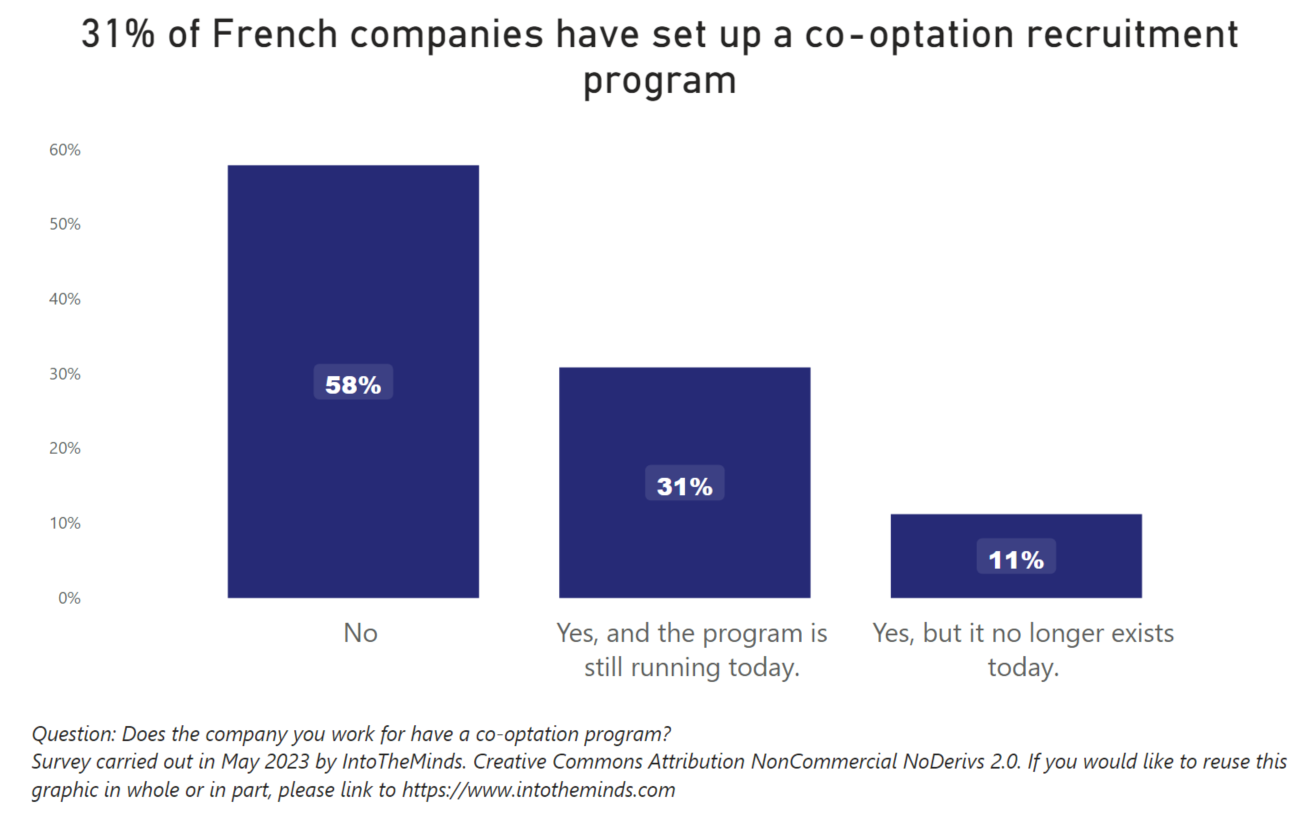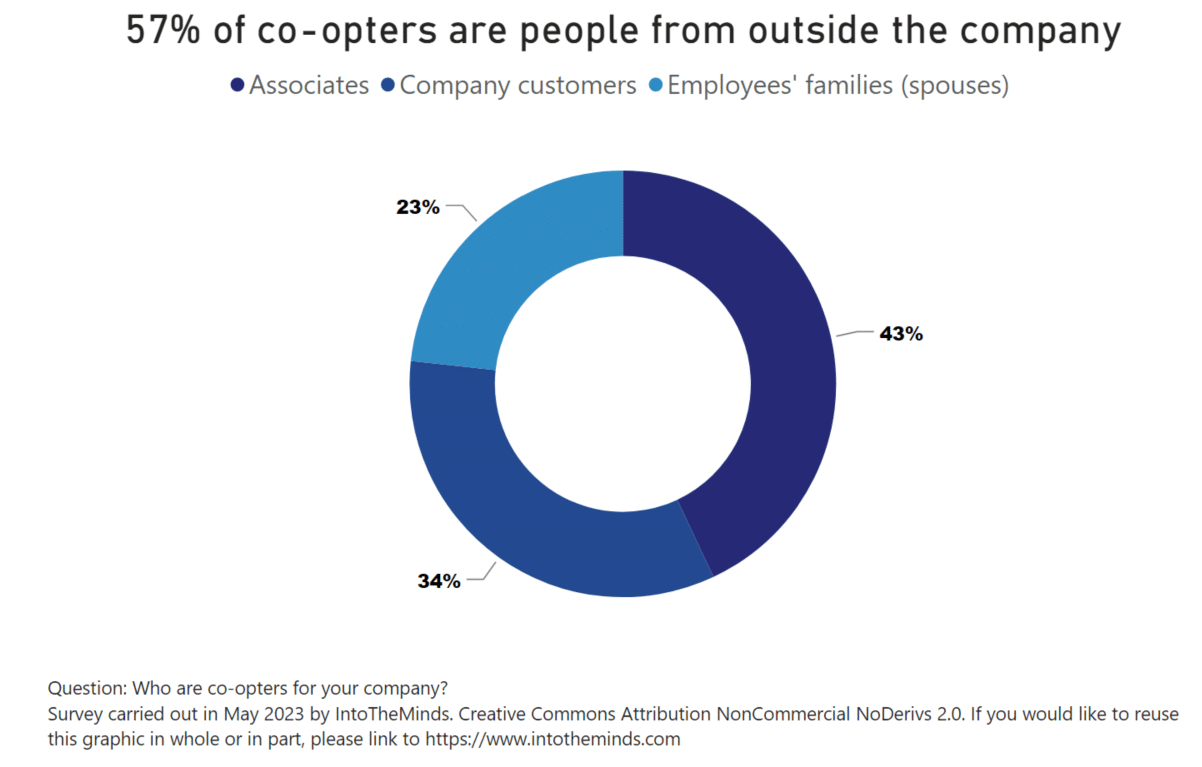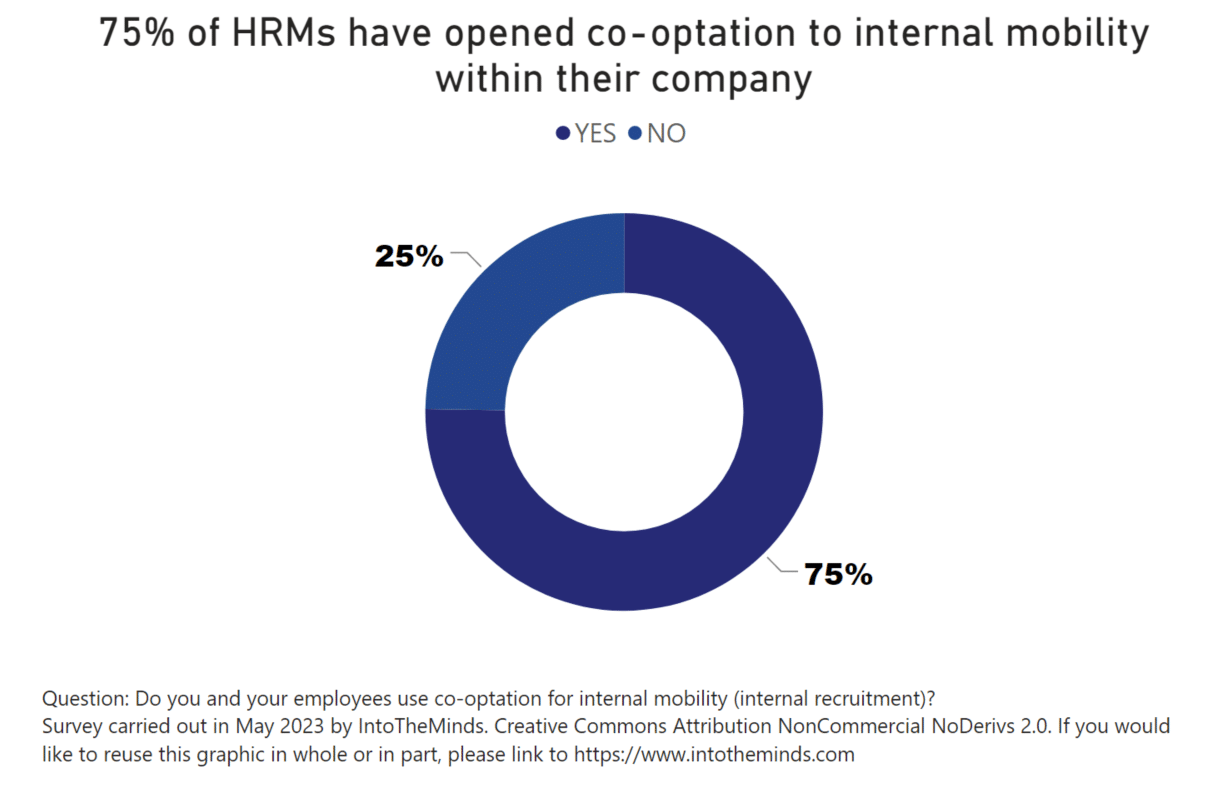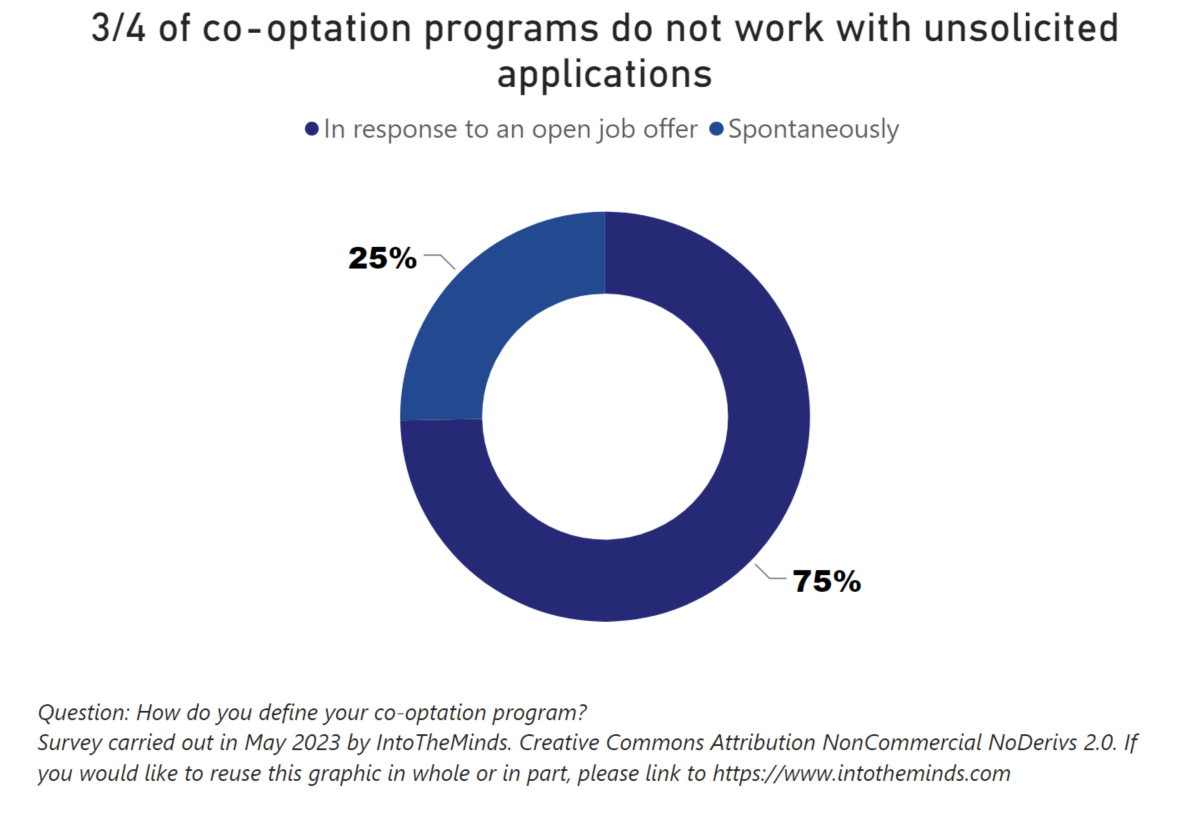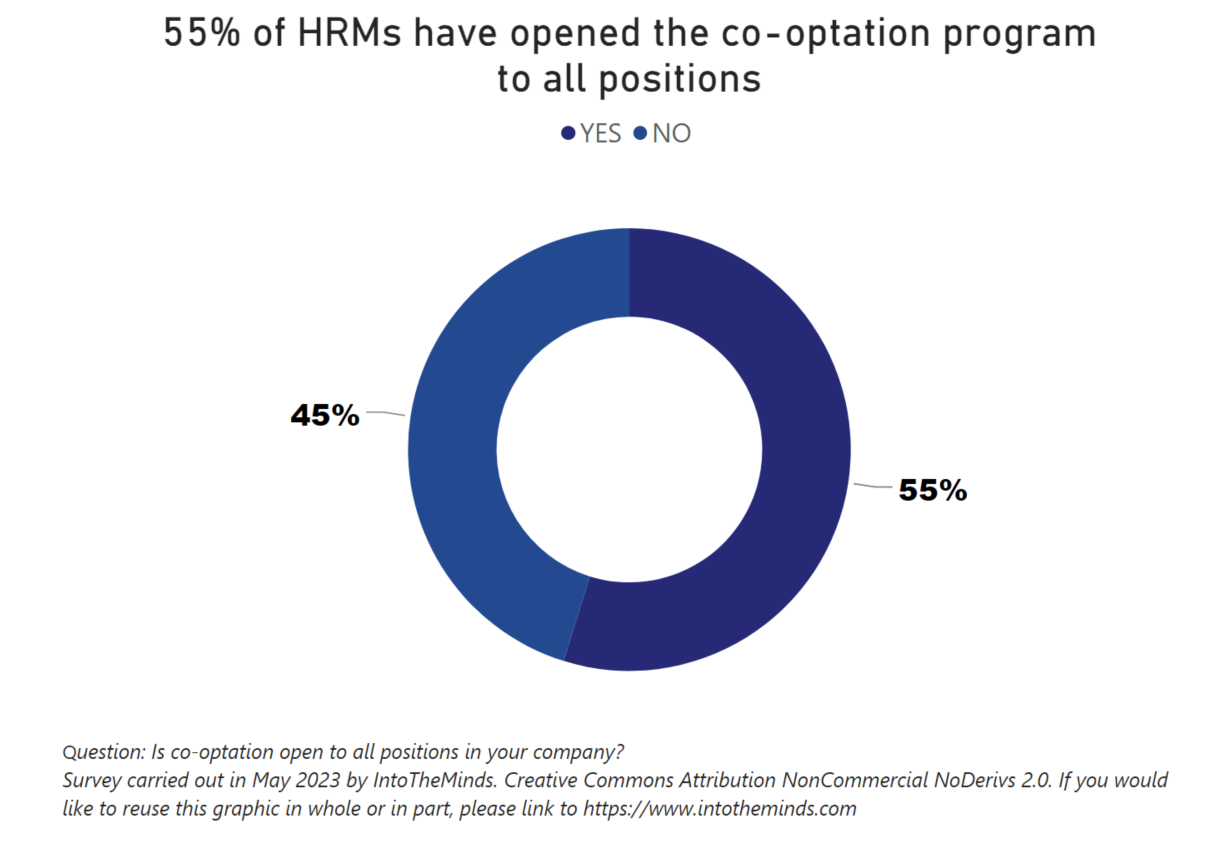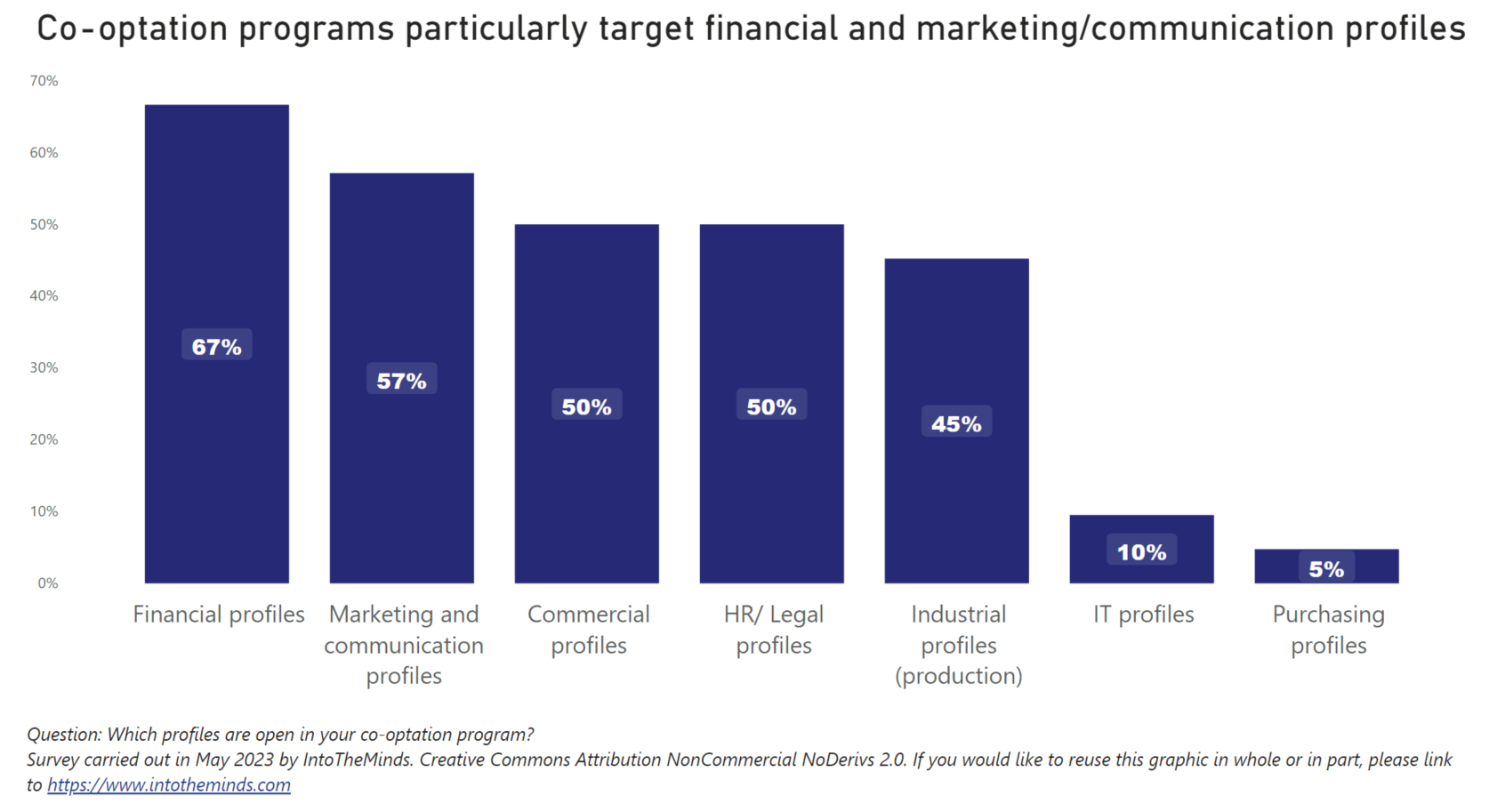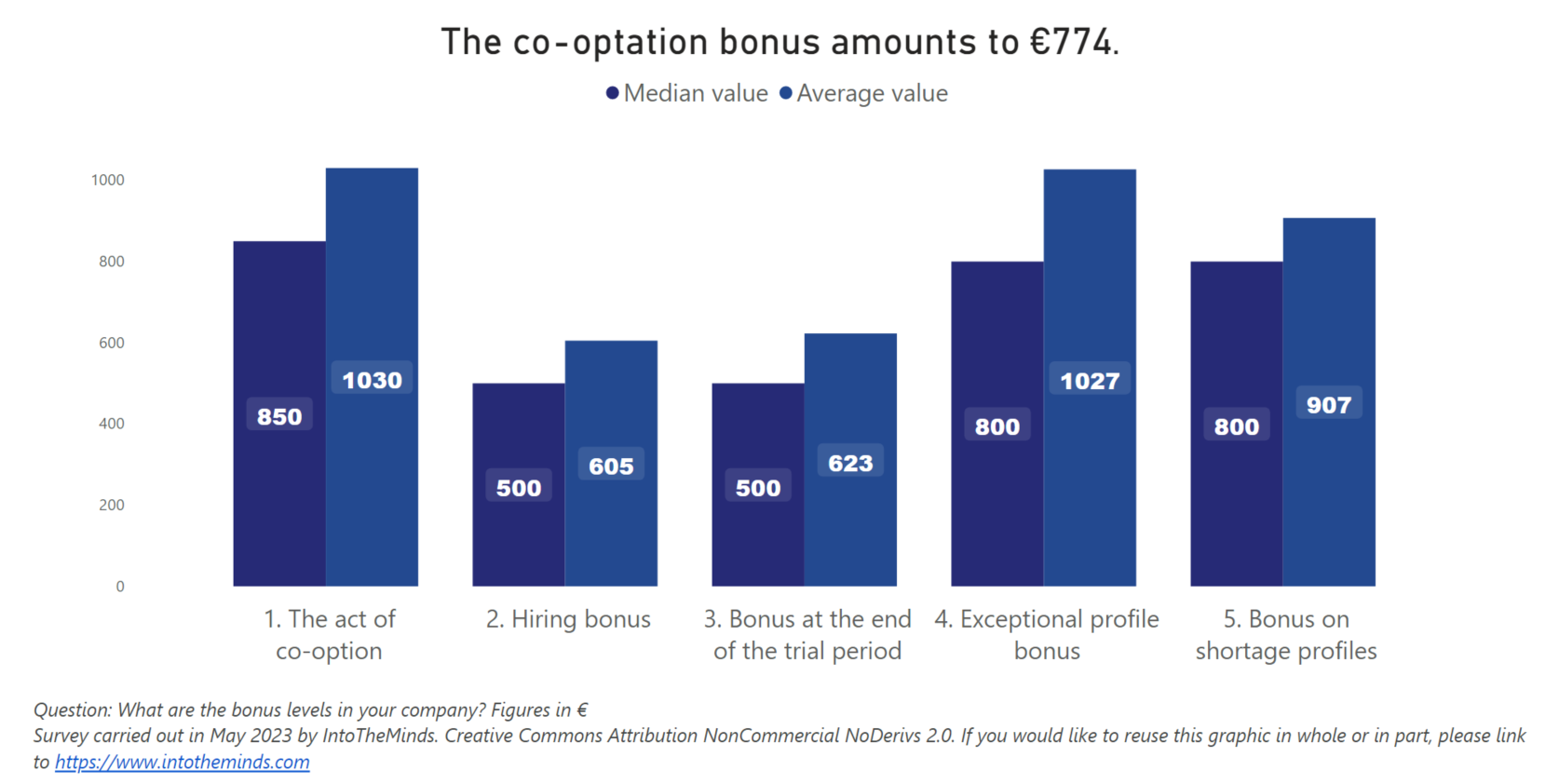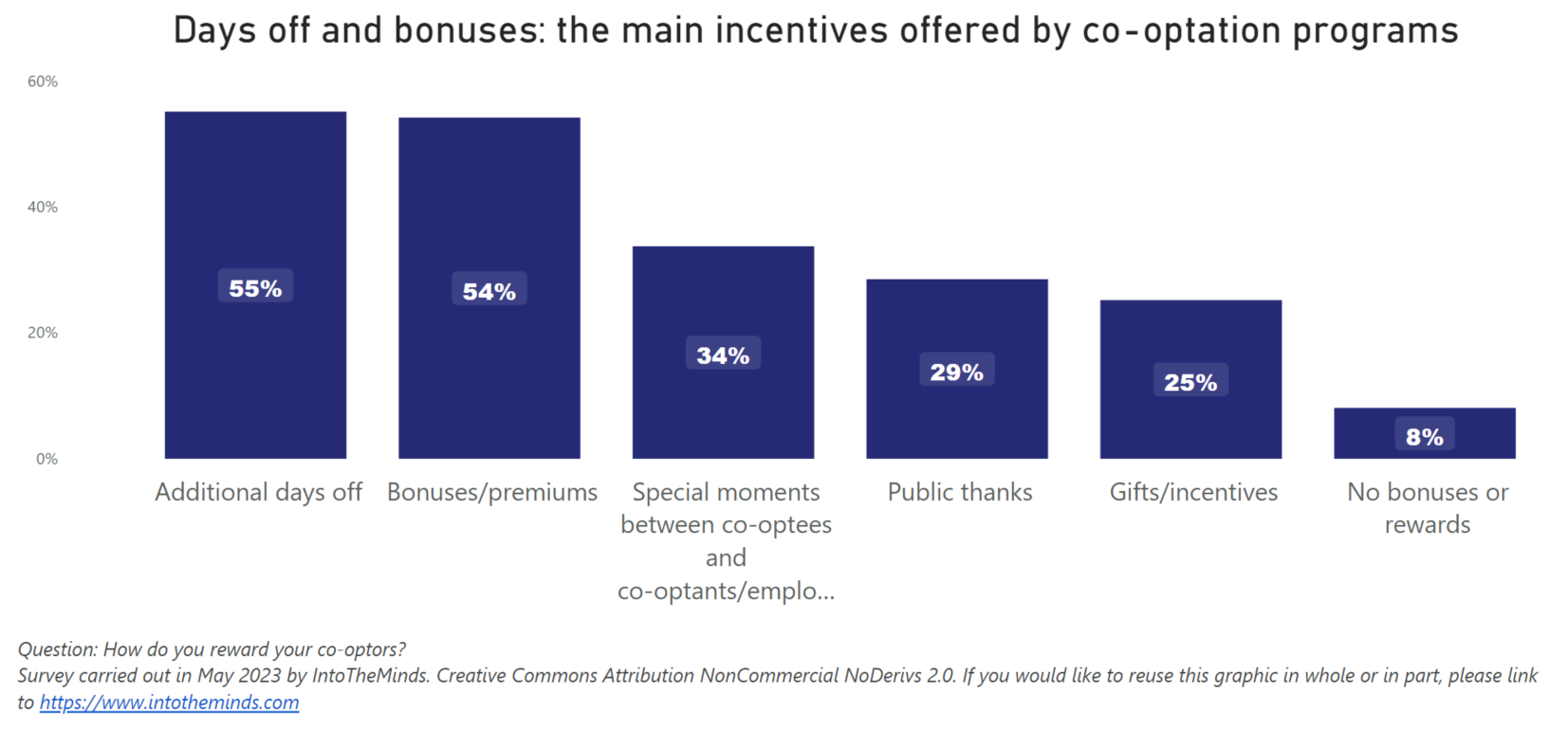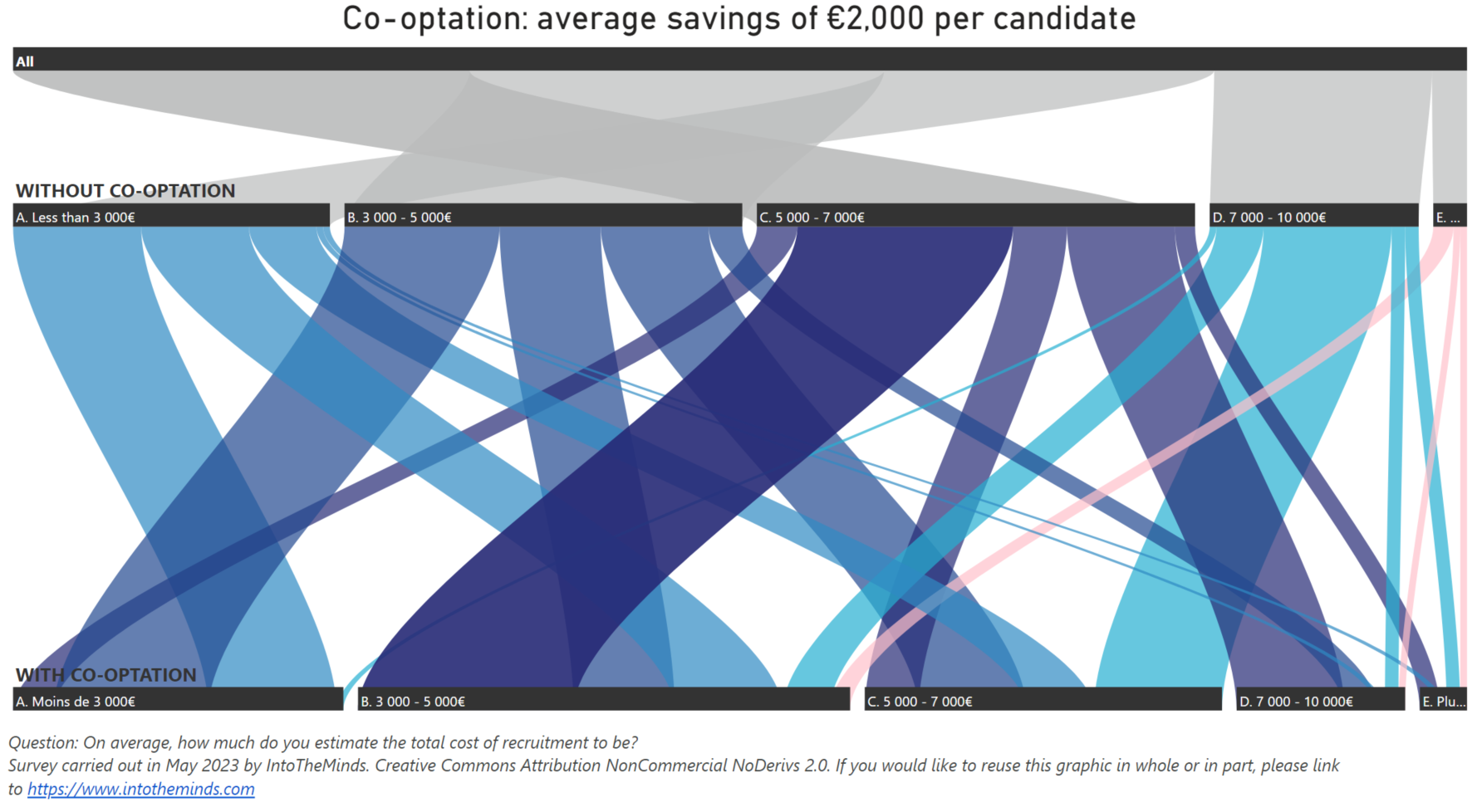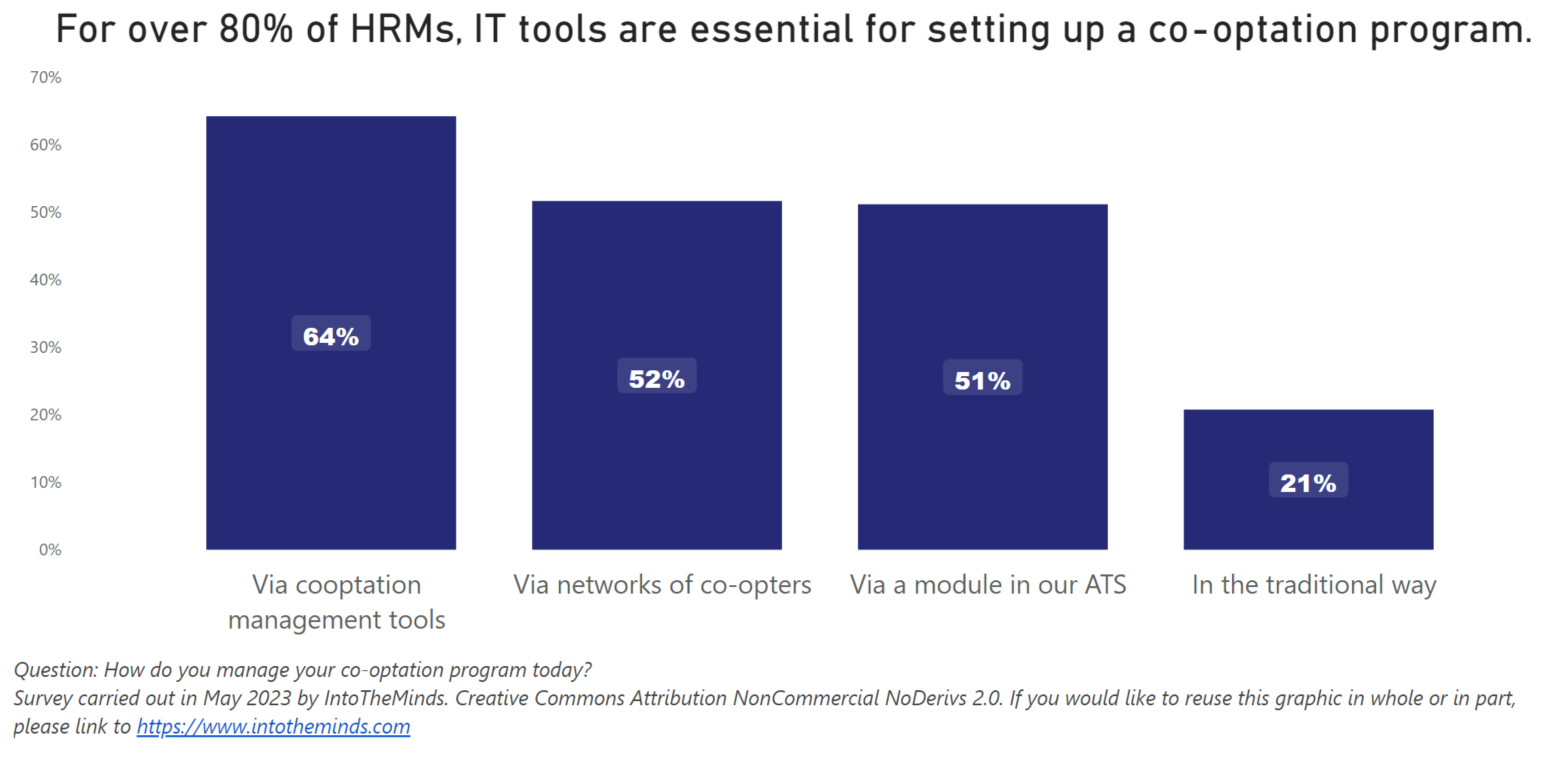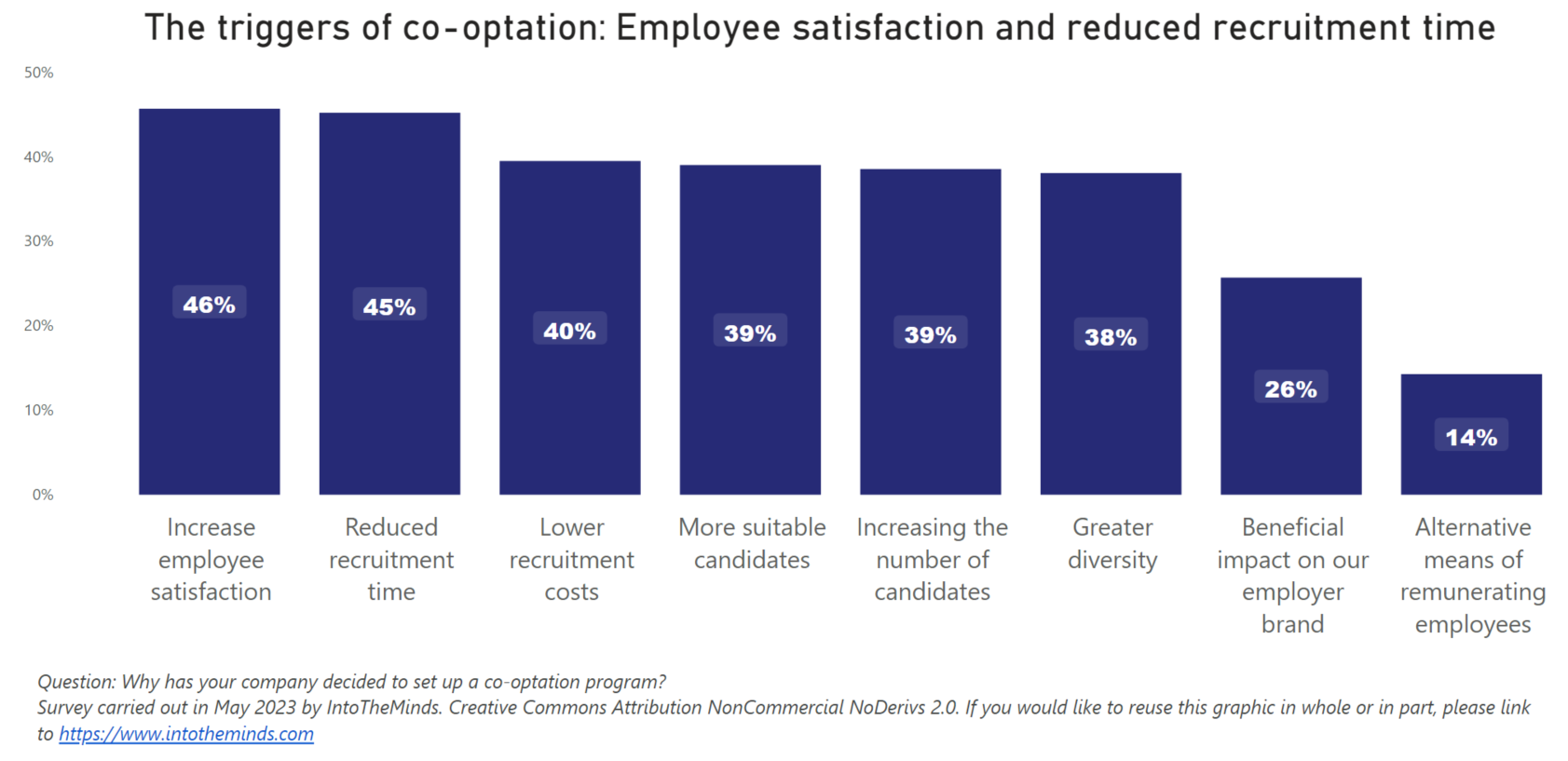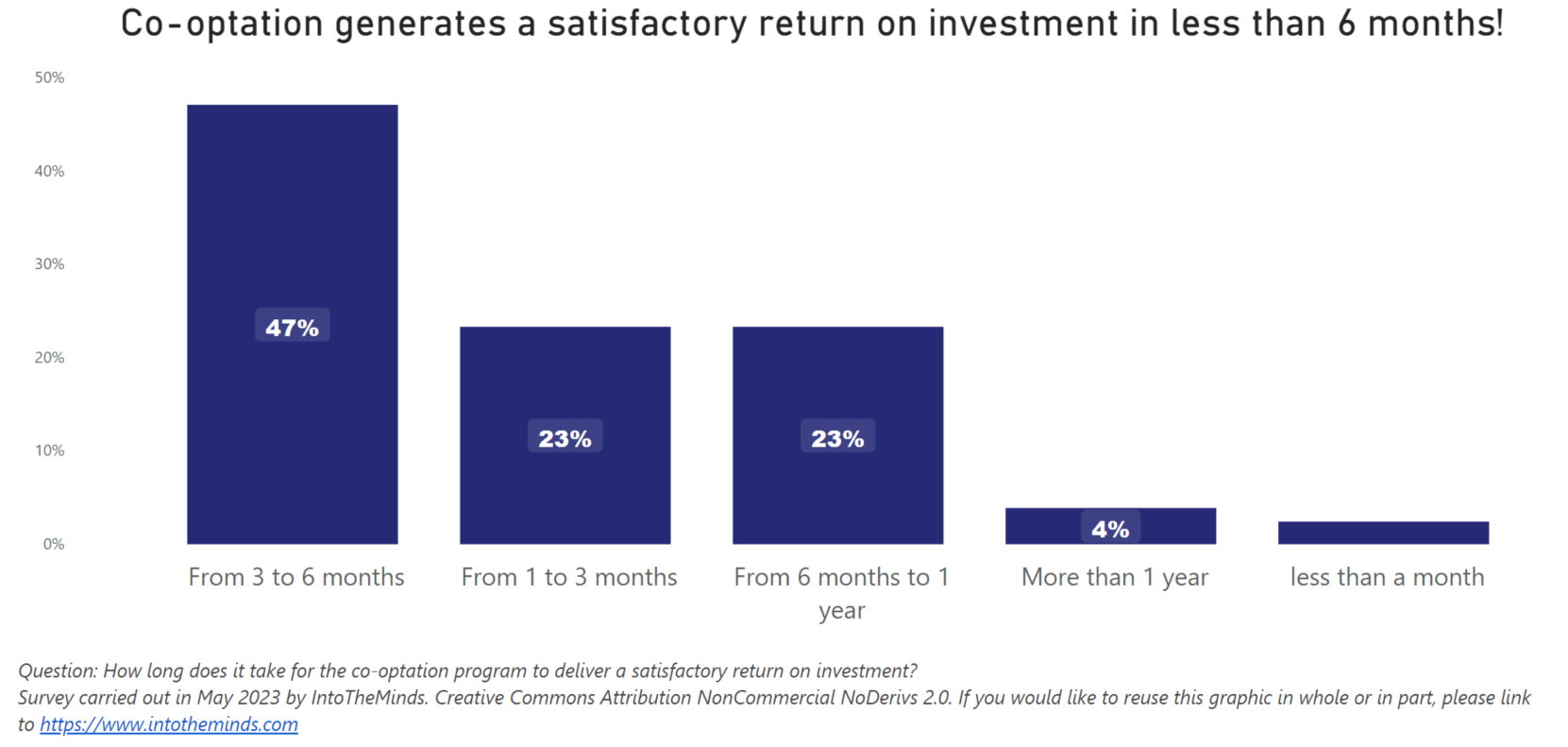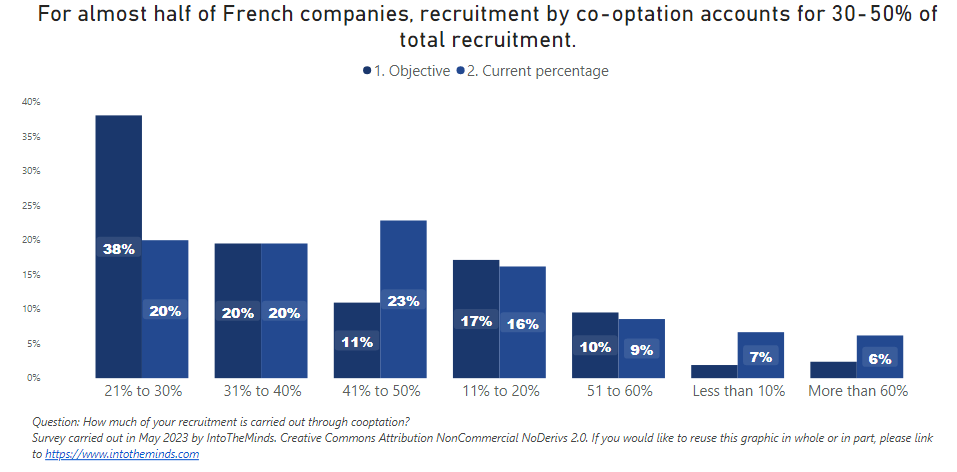Introduction
In the world of recruitment, co-optation has become an essential tool for companies looking for talent. By reducing recruitment time, cutting costs, and promoting diversity, co-optation is an integral part of companies’ recruitment strategies.
Yet, while this method offers many advantages, it remains under-utilized and sometimes misunderstood. This article explores co-optation and its impact on current recruitment strategies, focusing on the French experience.
A B2B survey (CAWI) of 500 human resources managers (HRMs) in France provided the information on which this article is based.
Co-optation: 10 key statistics
• 31% of companies have adopted a co-optation program
• 76% of co-optation programs are less than 5 years old.
• 84% of co-optations are in response to an open job offer.
• 34% of companies open co-optation to their customers and 43% to employees’ families.
• 54% of companies have opened co-optation to all positions.
• 50% of respondents see co-optation as a strategic inclusion tool for companies.
• 65% of companies use a specific co-optation management tool (ATS or dedicated tools).
• In the survey, the average co-optation bonus was €774.
• Co-optation saves an average of €2,000 per candidate
• 50% of respondents chose employee satisfaction as the main tool for measuring their co-optation program.
Definition of co-option
Co-option is a recruitment process based on recommendations and references from existing employees within a company. When a company uses co-option, it encourages its employees to put forward potential candidates for vacant positions. If the recommended candidate is hired and is successful in the role, the referring employee may receive a reward, such as a bonus or special recognition. In short, recruitment by co-option involves using a company’s internal network to find new talent, based on recommendations from its own employees.
Co-optation, a booming tool since COVID
The survey shows that co-optation programs are relatively recent: 76% are under 5 years old. Moreover, many companies have already adopted them (31%).
Despite this traction, the research also reveals that 58% still need to implement a program, and 11% have dropped out. There are many reasons for this lack of take-up: lack of resources, difficulties in measuring the advantages, and costs deemed unattractive by 32% of respondents.
Co-optation goes beyond company walls
The research also reveals an interesting trend: more companies open co-optation to their customers (34%) and employees’ families (43%). This openness indicates a desire to create a vast and varied co-optation network.
This aligns with the fact that co-optation is not used in a “vacuum” but draws on all the stakeholders around the company to be effective and collect a pool of competent, qualified, and relevant candidates.
Another surprising statistic is that 75% of HR managers said they had extended co-optation to their employees for internal mobility. This means that co-opters and co-opted can already be part of the company.
Lastly, and less surprisingly, 84% of HRMs say that co-optation is carried out in response to an open job offer. So co-opting an acquaintance will only work if a need has been identified in the company and a job vacancy is open.
Co-optation: an opportunity for all positions
When it comes to co-opting, variety is the order of the day. Thus, 55% of respondents indicate that all positions are available for co-option.
Regarding job profiles, the survey shows that companies particularly target financial and marketing/communication profiles, but also HR and sales profiles. In this respect, IT profiles, though considered penurious, are the big neglect of co-optation programs (10%).
Gratifier ses employés pour accélérer et diminuer le coûts des recrutements
A financial reward is an important tool in the co-optation process. According to the data, the average co-optation bonus is 774€. Companies are accustomed to offering strong incentives for co-optation, with a hiring bonus and a shortage bonus. Bonus amounts are highest for purchasing and marketing profiles, indicating the areas where co-optation is most valued.
The preferred bonus combination:
- Hiring bonus = €325
- Bonus at the end of the trial period = €400
- Profile shortage bonus = €350
That’s a total of around €1,000 per co-optant
However, bonuses are not the only incentives available to companies. According to our survey, additional vacation days are the number one incentive HR managers use (55%). Other means include special occasions (e.g., restaurants) and public thanks!
Despite these relatively high incentives, 85% of companies agree that co-option is the least costly recruitment method, with an average saving of €2,000 per candidate. The preferred combination of incentives is around €1,000 per co-opted. Moreover, 80% of companies agree that co-optation is the fastest recruitment method.
The importance of animation to maintain the momentum of co-optation
Co-optation program animation is essential to maintain employee commitment. 50% of HR managers surveyed run the co-optation program quarterly via the company’s career website (46%) and the company intranet (45%).
For this purpose, 65% of respondents indicated they had acquired a specific co-optation management tool (Linkeys, Keycoopt system, Trusty…). This figure demonstrates the growing importance of technology in the co-optation process and the flagrant need for internal resources to manage this program within companies.
Interestingly, 49% of respondents also use co-optation networks, demonstrating the trend for companies to have an extensive co-optation network.
Key HR objectives: diversity and employee satisfaction
Nearly 50% of respondents implemented co-opted recruitment to improve employee satisfaction and reduce recruitment time and costs.
According to research by QAPA (2019), these two factors are also the most cited. In particular, reducing recruitment time comes in the first place, closely followed by reducing costs.
Furthermore, a striking feature of our survey is that “more diversity” is mentioned at the same level as “cost reduction.” Co-option is a strategic element of inclusion for companies, enabling them to foster diverse talent within their teams.
The results of our survey run counter to current research on the subject. According to Payscale (2017), 44% of those recommended are white men, compared with 22% of white women. Men of color and women of color are 26% and 35% less likely to be recommended.
High satisfaction and rapid return on investment
For companies that have taken the plunge, co-optation is well received by HR managers, with an NPS of 19* and almost 32% favorable opinions. The satisfaction rate is 78%.
This is hardly surprising since the survey also shows that adopting a co-optation program is accompanied by a very rapid return on investment. Nearly 50% of HR managers reported a satisfactory return on investment in less than 6 months.
Conclusion: the promising future of co-optation
All in all, the potential for co-optation is very promising. With 96% of companies planning to set up a program within the next 12 months, co-optation is set to become a central element of recruitment strategies.
However, challenges remain. While co-optation programs are relatively young, with over 70% of such programs less than 5 years old, many companies (58%) still need to set up a co-optation program. More worryingly, 11% of companies have dropped out of their co-optation programs, often due to a lack of tangible results.
Moreover, measuring the costs and benefits of co-optation remains difficult. 32% of respondents indicated that the costs/benefits needed to be more interesting and easier to measure. This suggests that further efforts are needed to develop effective measurement tools and convince more companies of the usefulness of co-optation.
Despite these challenges, co-optation offers many advantages. Not only does it reduce recruitment time and associated costs, but it also promotes employee satisfaction and diversity within teams. Moreover, it contributes to creating a vast network of co-options, thus promoting recruitment and internal mobility.
In conclusion, while co-option is still in its infancy, its potential to transform recruitment practices is undeniable. By integrating co-optation into their recruitment strategy, companies can optimize recruitment processes, strengthen their employer brand, and promote a culture of inclusion and diversity.
Posted in Research.
